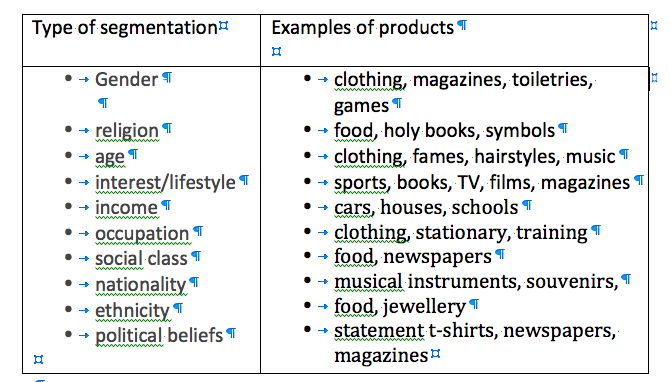Lucas, is a typical masculine name among the X Generation in Argentina. In Argentina, among the years and despite many devaluation milestones, the lunfardo managed to persist in time some special nicknames to certain amount of money, not because color or type of the bill but to different meanings and uses. U.S. dollars may also be accepted outside of the U.S. including in equity day trading Vietnam, Costa Rica, Peru and certain parts of Mexico. Few of us ever get a chance to see a Scenes of Canada $100 bill. Which is a pity, because it is an example of great bank note design with even greater imagery by a master engraver. With the continuing rise of e-transfers and electronic payments, people have been predicting the death of the humble cheque for decades.
- I remember the first time I saw contactless payment options in a Canadian store – I was actually pleasantly surprised by how seamless and convenient the process was.
- The Canadian dollar, or CAD, is the official currency of Canada.
- In this enlightening read, we’re going to dive into the captivating history of the Canadian Dollar, simplify the concept of exchange rates, and reveal some helpful tools for currency conversion.
- Similarly, the mint ceased production of the $2 bill in 1996 with the release of the “toonie,” the country’s $2 coin.
- The Colony of British Columbia adopted the British Columbia dollar as its currency in 1865, at par with the Canadian dollar.
Below, you’ll find Canadian Dollar rates and a currency converter. The penny, which is what we call the 1-cent coin, is made of copper-plated steel and features the maple leaf, a common symbol of Canada. However, due to its cost to produce, the Government of Canada stopped producing them in 2013.
Counterfeiting is a serious issue in the world of finance, and Canadian currency is no exception. Criminal organizations produce counterfeit Canadian currency with an aim to deceive and fleece unsuspecting individuals. The Canadian government deploys various security measures on the Canadian dollar to safeguard against counterfeit currency and preserve the integrity of its currency. If you’re planning on visiting or doing business in Canada, knowing the value of the Canadian dollar is crucial.
Historical Exchange Rates For Canadian Dollar to United States Dollar
These are the lowest points the exchange rate has been at in the last 30 and 90-day periods. These are the highest points the exchange rate has been at in the last 30 and 90-day periods. The value of the dollar is important to Canadians for two reasons. First, because Canada is a trading nation, changes in the value of the Canadian dollar affect the prices of goods that Canadians sell abroad as well as the prices of goods that Canadians purchase from abroad. As the value of the Canadian dollar rises, Canadian exports become more expensive, reducing demand and causing domestic unemployment.
- At the time of European contact, wampum belts were used to symbolize agreements of mutual respect and peace between First Nations and European newcomers.
- They are also recyclable and can have more security features than paper notes.
- Have you ever tried buying something in Canada and wondered what their currency is called?
Also known as the “Twoonie”, this $2 coin is made of two different colours of metal. It replaced the old two-dollar bill in the mid-nineties and has a polar bear on it. Canada also has a strong banking system with the Bank of Canada (Canada’s national bank) having the power to both print and buy currency in order to help control the value of Canada’s currency. forex trader best According to the International Monetary Fund, the Canadian dollar is one of the world’s seven reserve currencies and is known for its stability and reliability. U.S. banknote nicknames reflect their values (such as five, twenty, etc.), the subjects depicted on them and their color. A five-dollar note is known colloquially as a fin, a fiver, half a sawbuck.
Dime (10 cents)
In 1982, the 1¢ coin was changed to dodecagonal, and the 5¢ was further debased to a cupro-nickel alloy. In 1987 a $1 coin struck in aureate-plated nickel was introduced. In 1997, copper-plated zinc replaced bronze in the 1¢, and it returned to a round shape. This was followed, in 2000, by the introduction of even cheaper plated-steel 1¢, 5¢, 10¢, 25¢ and 50¢ coins, with the 1¢ plated in copper and the others plated in cupro-nickel.
After the Conquest (1759–60), the British introduced the pound. For almost a century, British pounds, shillings and pence were official money in Canada; and, the standard value for
the various kinds of money in circulation. The Spanish dollar was rated at five shillings, which meant there were four Spanish dollars to the pound. Spanish dollar banknotes were printed, including a $4 denomination to conform to the official value of
the pound. Canadian paper money, also known as bills, banknotes, or simply notes, is used for larger currency denominations.
In your upcoming family trip to Canada, you’ll find that all prices are expressed in this currency, making it easy to navigate your expenses. In conclusion, understanding the currency in Canada and how it compares to other currencies is essential for making the most out of your family trip. Internationally, the CAD plays a significant role and usually ranks among the top ten most traded currencies.
What is a 100 dollar bill called in Canada?
In 1942, as a wartime measure, nickel was replaced by tombac in the 5¢ coin, which was changed in shape from round to dodecagonal. Chromium-plated steel was used for the 5¢ in 1944 and 1945 and between 1951 and 1954, after which nickel was readopted. Since Canadians and Americans both refer to their respective currencies as “the dollar”, and because the two countries tend to mingle both socially and in the media, there is a lot of overlap in slang terms for money. However, this usually only extends to terms that are not specific to one country or the other. Senior people above 65 now (previous to baby-boomer generation) used to call “guita” to the coins of low denomination of cents (‘centavos’), like 2, 5 or 10 cent coins. They add hidden markups to their exchange rates – charging you more without your knowledge.
The Frontier Series—the seventh series for Canada—is made entirely out of polymer, a plastic substance that gives the currency added security features. The series was first introduced in June 2011; the $100 bill was the first to be put into circulation that same year. The remaining bills, the $50, $20, $10 and $5, were all released over the next two years. Some of the security features include raised ink, hidden images, metallic images — all of which are difficult to reproduce by counterfeiters.
The Canadian dollar is known as a commodity currency, meaning its value often correlates to commodity prices (see Commodity Trading). Natural resources such as crude oil, wood, and precious metals and minerals are an important part of the Canadian economy and account for a significant portion of Canada’s exports. As a result, the Canadian dollar often rises and falls with their prices. The second reason why the value of the Canadian dollar is important to Canadians is that changes in the value of the Canadian dollar affect Canadians’ financial dealings (both as lenders and borrowers) with foreigners. A rise in the value of the Canadian dollar reduces the cost of paying foreign loans and the return on Canadians’ investments abroad (see Foreign Investment).
CFI is the official provider of the Commercial Banking & Credit Analyst (CBCA)™ certification program, designed to transform anyone into a world-class financial analyst. By following these tips and managing your money effectively, you can reduce financial stress and enjoy your experience living or doing business in Canada. The Xe Rate Alerts will let you know when the rate you need is triggered on your selected currency pairs.
Canada’s monetary system always paralleled that of the US, with some notable differences. In 1870, the Dominion government issued shinplasters (25¢ government notes) to counteract the effect of an overabundance of American silver coinage in Canada that was worth only 80¢ against the Canadian dollar at that time. The decision to reject British money and adopt a decimal system like that in the United States was made in the decades before Confederation.
Travel money for Canada
Keep in mind that exchanging currency often comes with added fees that a conversion calculator won’t be able to predict. For instance, credit card companies usually charge a 2.5% conversion fee on all foreign transactions, and ABM networks, which are called ATMs in the United States, may charge an additional flat fee. Individual merchants multiple time frame analysis may also charge supplemental fees if you ask them to convert the price of an item to your home currency at checkout. It consists of M-2 and non-personal term deposits, including certificates of deposit held by business corporations. The total money supply consists of M-3 plus Government of Canada deposits in chartered banks.
Canadian Toonie
The Canadian Dollar goes by different names, such as Can$, C$, or even the “Loonie,” owing to the loon – a majestic bird – featured on the one-dollar coin. Have you ever tried buying something in Canada and wondered what their currency is called? It’s abbreviated as “CAD” and is recognized worldwide as a major currency. The currency of Canada is called the Canadian dollar and is denoted as C$. It has been the physically smallest Canadian coin since 1922; it is smaller even than the penny, despite its higher face value.
The Loonie is Canada’s $1 coin and is made of gold-coloured nickel. There used to be a one-dollar bill, but it was phased out in the 1980s. The coin was given the name “Loonie” because it features a picture of a loon on it, which is the national bird of Canada. In addition to the designs below, all of the coins have a portrait of Queen Elizabeth II on the reverse side, and are inscribed with the Latin phrase D.G. Regina, or Dei Gratia Regina, which means “Queen by God’s Grace.” The Queen’s portrait is updated every so often, meaning it’s easy to tell at a glance how old a coin is based on how old Her Majesty looks.
Canada currently has the world’s third largest oil reserves and is the world’s fourth largest oil exporter. You can also access live foreign currency exchange rates and even utilize an XE currency data API if you need to embed currency conversion tools within your own website or app. It’s super user-friendly and offers up-to-date currency exchange rates, so you can convert your US dollars to Canadian dollars with ease. As a Canadian dollar expert blogger, it’s important to understand the intricacies of exchange rates. Exchange rates dictate the value of currencies in relation to each other.


